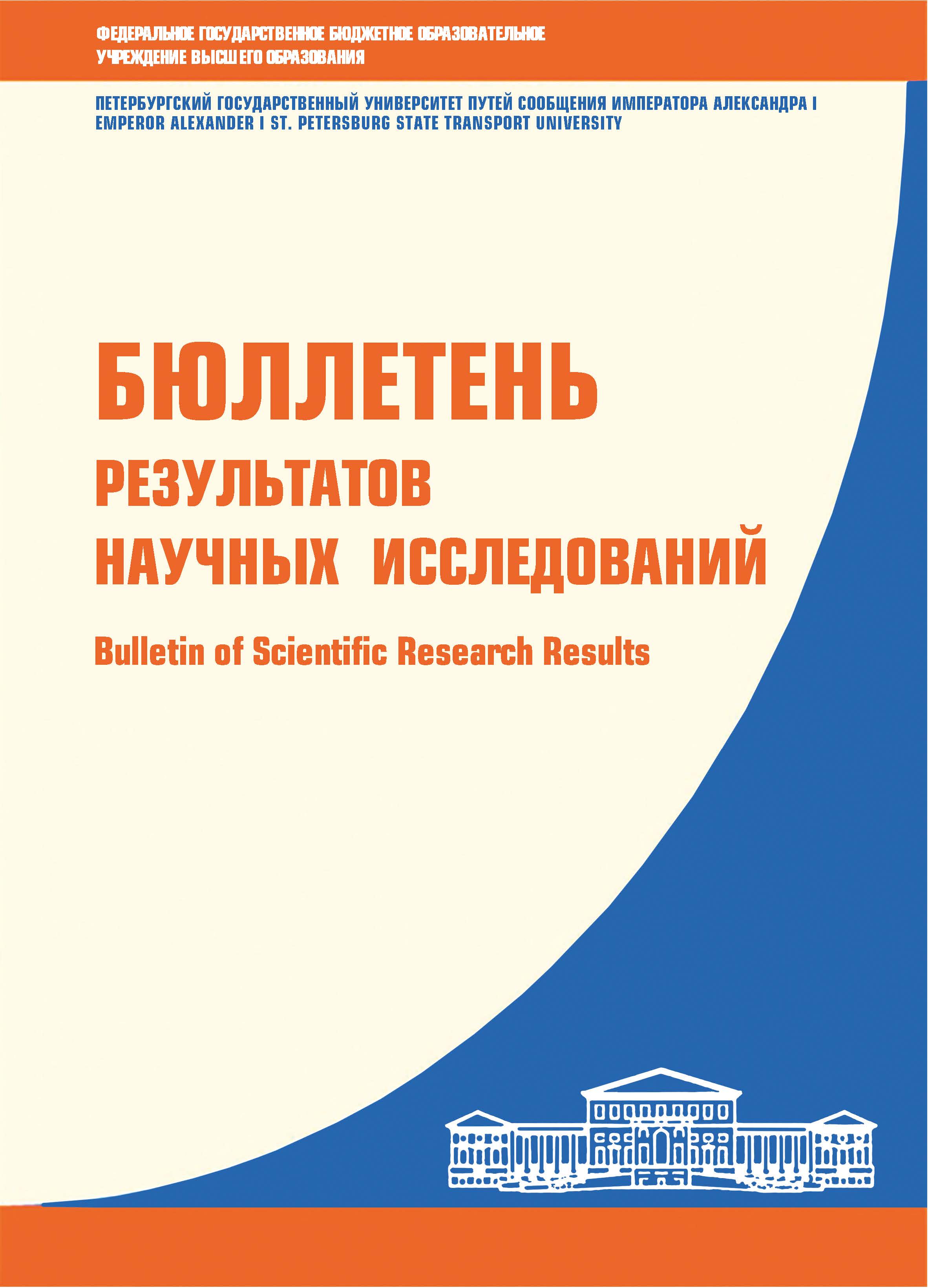Russian Federation
Purpose: To consider the issue of sustainability of multi-level control systems for car flows to port railway stations in the conditions of intellectualization of transportation management processes. To assess the influence of three-level and two-level control systems for the operational work of port roads on the quality of planning the supply of trains to port stations under various modes of operational operation of railways. Determine the conditions for the stability of the car flow control system by constructing and studying the corresponding hard and soft mathematical models described by autonomous systems of ordinary linear differential equations. Methods: In this study, the methods of the theory of stability of solutions of differential equations, as well as the theory of control and dynamical systems are used. A phase space is used in a visual representation, a qualitative and quantitative analysis of the behavior of phase trajectories in it is performed, corresponding to undisturbed and perturbed solutions of systems of differential equations describing the constructed models of control systems. Results: A comparison of the characteristics of multistage car traffic control systems is given. A study of the stability of multilevel models of car traffic management in the context of the intellectualization of management functions is proposed. In the environment of the analytical computing system, the conditions of asymptotic stability in time of a two-level wagon traffic control system are found and studied. Practical importance: The results obtained by computational experiment make it possible to assess the stability of the functioning of port-side transport and technological systems in the context of changes in the organization of production and the intellectualization of transportation management processes. Computer mathematics systems make it possible to implement the heuristic component of research and obtain theoretically sound and visual solutions to problems of optimizing cargo and wagon traffic control modes.
Transport systems, railway transport, port stations, organization of transport production, stability of control systems, differential equations, computer mathematics systems
1. Statistika // Associaciya morskih torgovyh portov. URL: https://www.morport.com/rus/content/statistika‑0 (data obrascheniya: 11.07.2024).
2. Chernyaev A. G., Zubkov V. N., Chebotareva E. A. Razvitie poligonnyh tehnologiy perevozok na osnove sovershenstvovaniya logisticheskogo upravleniya vagonopotokami v granicah neskol'kih dorog // Vestnik Rostovskogo gosudarstvennogo universiteta putey soobscheniya. 2017. № 2 (66). S. 75–82.
3. Plenkin S. A., Novichihin A. V. Razrabotka metodiki pereraspredeleniya vagonopotokov (na primere Severo-Zapadnogo poligona) // Byulleten' rezul'tatov nauchnyh issledovaniy. 2023. Vyp. 3. S. 73–84. DOI:https://doi.org/10.20295/2223-9987-2023-3-73-84.
4. Zadorozhniy V., Bakalov M. Principles of Mathematical Modeling of Wagon Flows Distribution in the Portside Transport and Technological System // Lecture Notes in Networks and Systems:International School on Neural Networks, NN 2022 (St. Petersburg, Russian Federation, 08–10 February 2022). 2023. Vol. 509. P. 881–888. DOI:https://doi.org/10.1007/978-3-031-11058-0_89.
5. Chebotareva E. A. Teoriya i metodologiya organizacii transportnogo proizvodstva v priportovyh transportno-tehnologicheskih sistemah: monografiya. Rostov n/D.: FGBOU VO RGUPS, 2020. 267 s.
6. Zubkov V. N., Ryazanova E. V., Anoshkin K. V. Proposals for the Development of the Road Information Logistics System (RILS) // Proceedings‑2022: International Russian Automation Conference, RusAutoCon 2022. 2022. P. 527–536. DOI:https://doi.org/10.1109/RusAutoCon54946.2022.9896277.
7. Shapkin I. N., Os'minin A. T. Cifrovye tehnologii prihodyat na smenu prezhney ideologii upravleniya perevozkami // Innovacionnye tehnologii na zheleznodorozhnom transporte: sbornik trudov nauchno-prakticheskoy konferencii s mezhdunarodnym uchastiem. M., 2022. S. 413–431.
8. Os'minin A. T. O razrabotke intellektual'noy sistemy upravleniya perevozochnym processom na zheleznodorozhnom transporte // Nauka 1520 VNIIZhT: Zaglyani za gorizont: sbornik materialov nauchno-prakticheskoy konferencii AO «VNIIZhT». Scherbinka, 2021. S. 139–147.
9. Os'minin A. T., Kabanov A. V. Dinamicheskaya model' zagruzki infrastruktury OAO «RZhD» // Zheleznodorozhnyy transport. 2021. № 8. S. 10–19.
10. Arnol'd V. I. «Zhestkie» i «myagkie» matematicheskie modeli. 2‑e izd. M.: MCNMO, 2008. 32 s.
11. Levin D. Yu. Teoriya operativnogo upravleniya perevozochnym processom: monografiya. M.: GOU «Uchebno-metodicheskiy centr po obrazovaniyu na zheleznodorozhnom transporte», 2008. 625 s.
12. Chebotareva E. A., Bogachev V. A. Issledovanie organizacionno-tehnologicheskoy ustoychivosti sistemy upravleniya vagonopotokami c ispol'zovaniem teorii differencial'nyh uravneniy // Vestnik Ural'skogo gosudarstvennogo universiteta putey soobscheniya. 2023. № 4 (60). S. 4–12.
13. Petrovskiy I. G. Lekcii po teorii obyknovennyh differencial'nyh uravneniy. 2009. 207 s.









